The Global Hindu Heritage Foundation (GHHF) was founded in 2006 to support the preservation, promotion, and maintenance of Hindu culture, temples, and institutions internationally. To achieve this objective, GHHF is conducting about 14 activities at the grassroots (village) level to make Hindus aware of the richness of Hinduism, making them proud of their culture, stopping Christianization of the villages, equipping the children with scientific, spiritual, and religious significance of Hinduism, and many more as listed below. One ounce of activity is worth tons of talking.
1. Ghar Wapasi: to protect our Hindus from conversion and welcome back to Hinduism those who were converted to Christianity. Twenty-two Pracharaks work in six different states, educating our Hindus about the difference between Hinduism and Christianity, giving tips on how to encounter missionaries, and preparing Hindus to act like Hindus with pride. 30+ Pracharaks work daily to make Hindus realize the greatness of our culture and welcome back those converted Christians to Hinduism.
2. Bala Samskar Kendras: 175 schools started in nine different states and Bangladesh to educate our children about the richness and greatness of Sanatana Dharma. A detailed syllabus has been created to educate individuals on local customs, festivals, the sacrifices made by national heroes, the teachings of prominent Maharishis, the cultural significance of the Ramayana and Mahabharata, moral stories, and the practice of Surya Namaskaras. The institution has an enrolment of approximately 4,500 students.
3. Grama Devata Temples: are being renovated to preserve village deities' culture and ensure village safety. More than 45 Grama Devatas were renovated to ensure the continuity of ancient culture. About 60 Grama Devatas have been constructed.
4. Annadanam: It is a regular feature that provides annadanam to deserving people. During COVID-19, GHHF provided annadanam to more than 2 lakh people. Also provided dry goods sufficient for one month for more than 1000 Priest families and gave $5,000 to more than 150 poor priests. In the USA, we provided meals for one month to the First Respondents in appreciation of their dedicated service
5. Sponsor a Priest: Employing unemployed Priests to open Temples that were closed due to financial difficulties. Visit each family in the village, invite them to the Temple, organize Bhajans, and teach mantras to chant.
6. Dhupa Deepa Naivedyam: Providing necessary puja items to village Temples that could not light the lamps in the villages. More than 1000 Temples received Puja items.
7. Intinta Shiva Abhishekam: was started to perform rituals in the homes of poor, Dalit, and tribal communities to foster appreciation for traditions and unite these groups.
8. Cow Puja and Protection: prevented the transportation of and slaughtering of cows; supported more than 25 gaushalas, sponsoring and maintaining the cows in the largest Gaushala in Memphis, TN, USA.
9. Animal Welfare: In summer, many animals lack food and water. To ensure the basic needs of the cows, monkeys, dogs, birds, etc., GHHF made water Tubs specially on this purpose, and filled them with water every day for more than two months each year.
10. Water Pandals (Chalivendras): opened in about 30 centers to provide water and buttermilk in the Summertime in 2024. We rented water tanks and sourced water from nearby wells, ensuring that the pandals were replenished approximately every three months.
11. Imprint “Jai Sri Ram”: in villages to create a sense of identity among Hindus – more than 2 lakh houses, walls, electrical poles, autos, etc., in more than 500 villages. More than 200 volunteers have signed up to help with this project.
12. Tailoring training for women: We are empowering these women, who face many challenges due to financial difficulties, through a tailoring training program. Bought 8 professional machines, and training 16 women every two months. This program not only provides skills but also encourages them to become economically independent and live with self-confidence.
13. Microphone sets to promote Bhajans: We are continuously striving for the propagation of Hindu Dharma and the development of temples by organizing Bhajans to create devotion. As part of this effort, we are providing free microphone sets to temples at the request of local communities. Supplied more than 100 Mic sets so far. Microphone sets for temples are not just objects; they are powerful tools for spiritual propagation.
14. Flood Relief: GHHF provided food, baby food, water bottles, and fodder for animals to the flood victims in Assam and Andhra Pradesh. Recently, in Assam, we provided 67,000 meals, baby food for 134 children, and fodder for 65 cows, covering 77 villages.
15. Environmental Protection: Summer heat waves are causing health problems through dehydration, exhaustion, and loss of electrolytes. We can address the issue by planting more trees. We have been planting many trees in Assam and Andhra Pradesh for the last four years. In Anantapur, more than 1,000 trees were planted, while in Assam, 750 saplings were planted. 3,000 eco-friendly Ganesh idols were distributed. Also, GHHF celebrates World Environmental Day every year.
16. Help Hindus in Bangladesh: Hindus in Bangladesh are facing severe violence, including attacks on homes, temples, and businesses. Thousands are struggling for survival with critical needs for food, shelter, and protection. The Global Hindu Heritage Foundation (GHHF) is working to provide aid, including meals for the homeless, protection for temples, and support for those in hiding.
Your donations are appreciated.
By Zelle: ghhfusaorg@gmail.com
PayPal: savetemples.org
By Check: Or you can send a check payable to GHHF, 14726 Harmony Lane, Frisco, TX 75035.
It is tax-deductible.
By Rupees: call 601-918-7111; +91 83096 43979
{{album_1500}}
15 Dec 2025






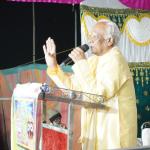
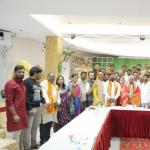
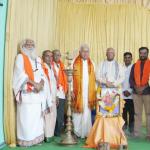
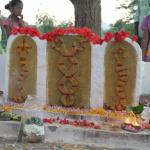

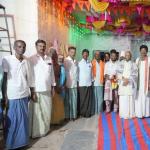
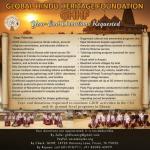
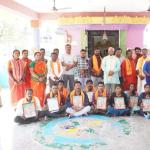
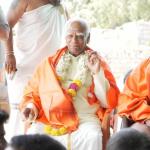
 Urgent support needed for Bangladesh Hindus
Urgent support needed for Bangladesh Hindus 



